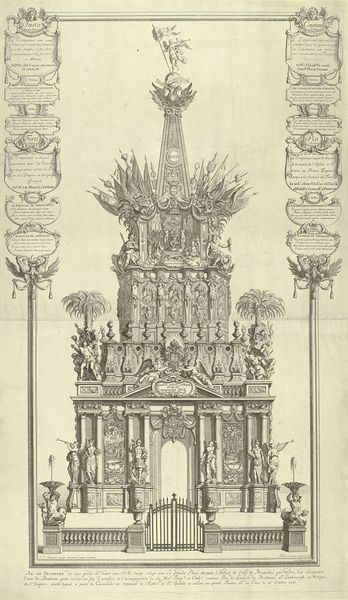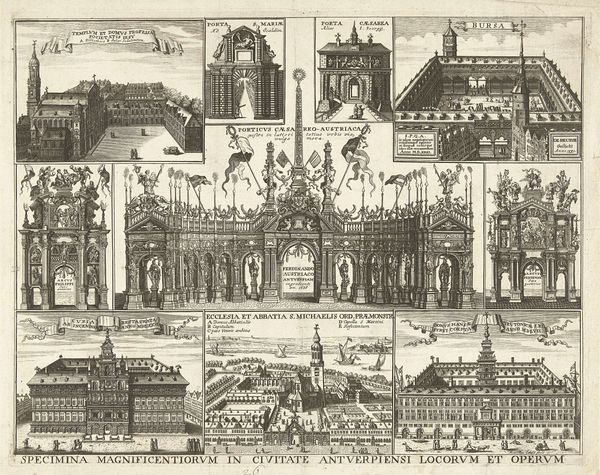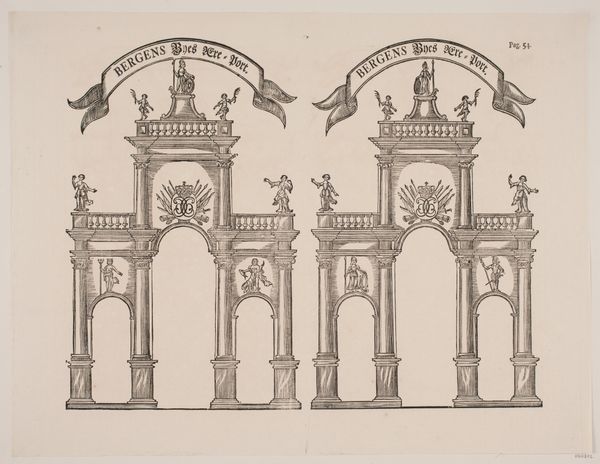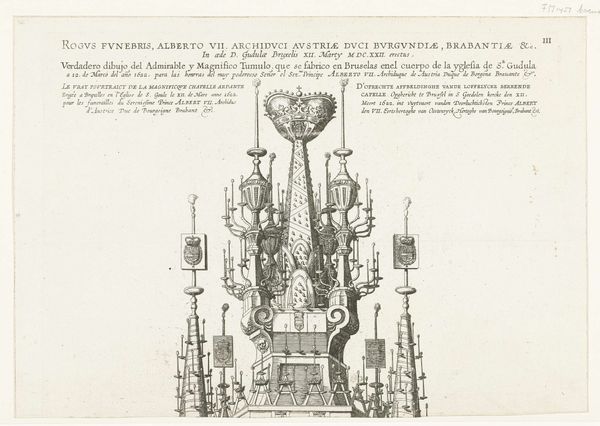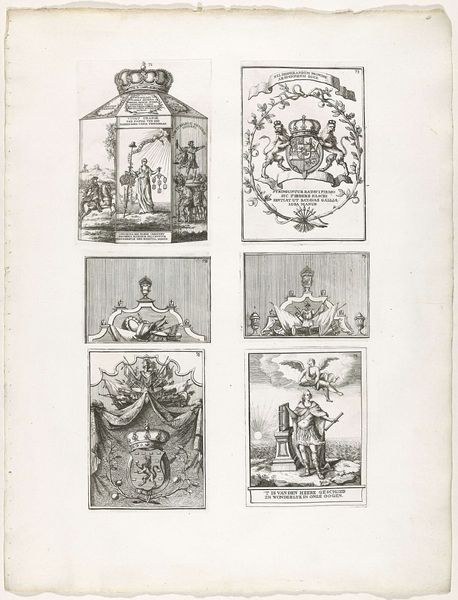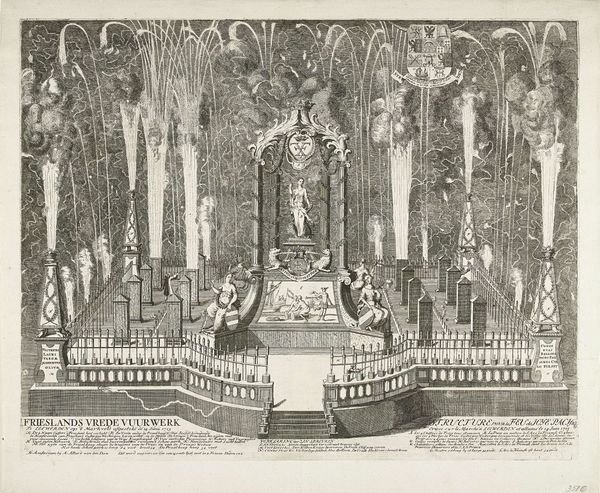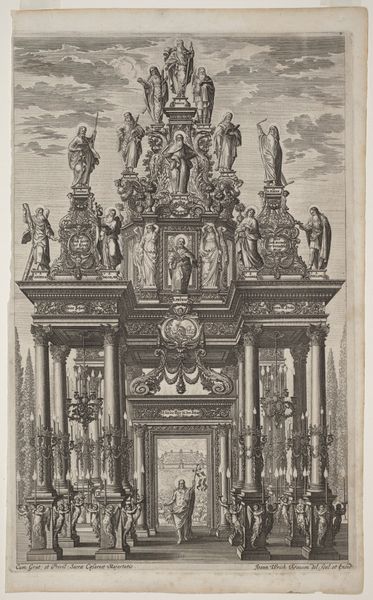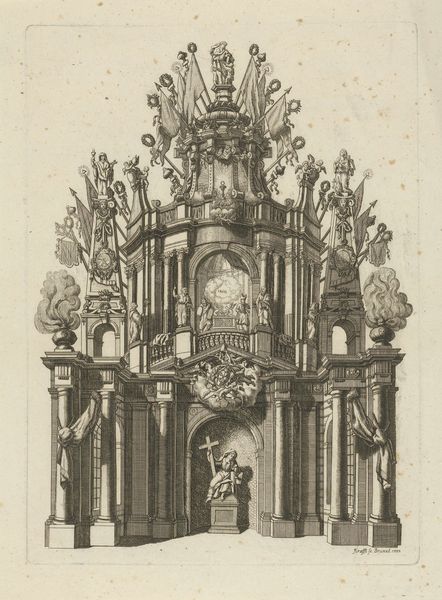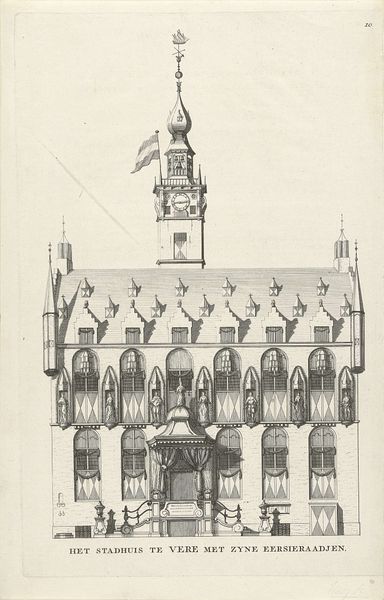
Dessert op vier tafels bij het feestmaal ter ere van de kroning van keizer Frans I Stefan, 1746 1746 - 1747
0:00
0:00
engraving
#
baroque
#
old engraving style
#
cityscape
#
history-painting
#
engraving
Dimensions: height 408 mm, width 310 mm
Copyright: Rijks Museum: Open Domain
Curator: At first glance, I see almost like an architectural rendering. It’s fascinatingly ornamental. Editor: Indeed. This is "Dessert op vier tafels bij het feestmaal ter ere van de kroning van keizer Frans I Stefan, 1746" by Jan Caspar Philips, created around 1746-1747. It's an engraving. Curator: So, it documents a confection, or rather, a series of incredibly elaborate edible constructions. We see four separate displays. The density of the design suggests meticulous work. Was this mass produced? What was Philips' relationship to the creation of this print, to the festivities depicted, and to his commissioner? Editor: What this engraving does, brilliantly, is memorialize the excess on display during Emperor Francis I Stephan’s coronation. It functions almost as political propaganda—visualizing the pomp and grandeur to reinforce imperial power. The very act of transforming such a fleeting event into a permanent print underscores the importance of documenting and disseminating that power. Think of who might purchase or receive it as a gift! Curator: Absolutely, this engraving technique allowed for dissemination among specific audiences, becoming part of courtly culture itself. The desserts weren’t merely consumed; their images became objects of status and instruments of influence. It also speaks volumes about the labor involved—from the confectioners creating these fantastical structures from sugar and marzipan, to Philips, meticulously transferring it all into reproducible form. Each table could represent a different confectioner or guild trying to impress with their unique skillset. Editor: Right, it serves as a document of baroque power dynamics and culinary extravagance. Curator: Thinking about the print's material qualities makes the impermanence of the sugary spectacle more apparent. This printed version can last hundreds of years whereas the constructions are fleeting moments of glory. Editor: A worthwhile trade in their time, I believe. It leaves us to reconsider the interplay between ephemeral events, their enduring representations, and the political messages they carried then and still carry today.
Comments
No comments
Be the first to comment and join the conversation on the ultimate creative platform.

